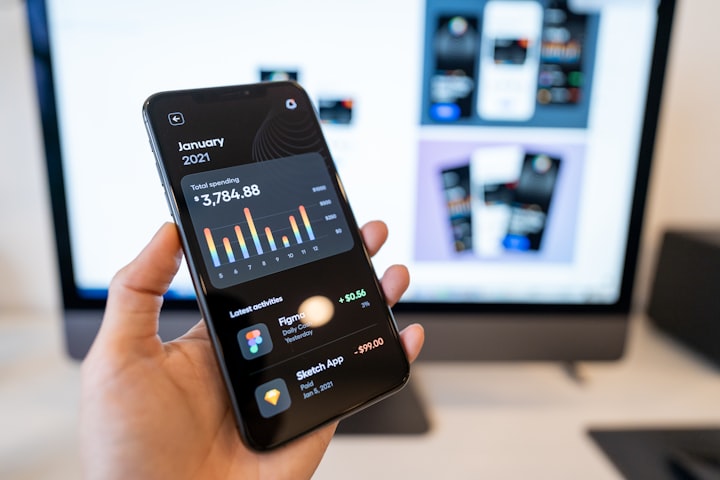The Issue With Fast Chargers
What is the drawback of fast-chargers?

It feels like every few days a new company is coming up with a new and improved Fast Charger, and some even provide crazy fast speed such as 120W. What these companies don’t say to you is that this doesn’t come for free and has some major implications for your battery life.
Before we get more in this article let’s quickly look at how a battery works so that you have a better understanding of what I’m going to talk about further.
How Does a Battery Work?
The way a battery works is with two poles a negative one and a positive one. At the negative pole of your battery, you have plenty of electrons in the free moving state, at the positive pole you have less so naturally, the flow creates from the negative side to the positive. By doing this movement the battery can charge whatever device you want to.

As you can clearly see from the picture above the electrons from the negative pole are moving to the positive pole. The dotted line shows where you can connect a device and power it. When all the electrons go to the positive side there is no more flow of electrons happening and this means that the battery is dead.

This is where the charging comes into play, we push electricity to make the electrons go back on the Negative pole so that there’s a flow again.

In this picture, you have the charger on the left side connected to the battery and you can see the electrons coming back to the negative pole. So chargers just help the electrons change positions, and the fast chargers do this just a little faster. This is a simple explanation about batteries and I hope you understood what I was talking about clearly.
The Problems with Fast Chargers
Well, you might think that fast chargers don’t have any drawbacks since the companies selling these chargers don’t tell you about it but in reality, they have.
Less Capacity
With fast-charging batteries, you get less battery capacity. In every battery, there’s a positive pole and a negative one as I explained above but there’s also a separator that keeps the electrons from jumping directly to the other side. The electrons are directed through a circuit so that you get the electricity created from them.

The problem arises with the fast charging batteries since to keep the battery stable at a high speed of charging you need to make the separator in the middle thicker which means less battery capacity. The actual amount of usable battery or battery density becomes lower.
These new smartphones with super-fast charging or ultra charging sometimes even need to split the battery area into two individual batteries because of the separator which would need to be even bigger. And as you can guess this also means less battery capacity.
Overheating
If you have a fast-charging phone by now you would have noticed that the phone heats a lot more than the normal charging phones. Faster electron movement means there is going to be more heat produced. This heat is not good for the battery since it can slowly and subtly change the internal physical structure which would make the battery charge hold less.
Even if you kept your battery temperature at 30-degree celsius you could expect to lose around 20% of your battery capacity in a year. And if your battery is at 40-degree celsius then you can expect more than 40% of the battery capacity to be gone in a year or so.
It’s usually recommended that when the phone is charging you leave it be and don’t work on it because it can overheat and damage your battery in the long run. However, there are some newer gaming phones that have the charging port positioned in a place that it’s better for playing when plugged in.

I recommend that you do this only if your phone is able to bypass the battery and take the electricity directly from the current this way the battery doesn’t get hot. This forces the phone to charge the components directly from the charger, not the battery.
Shortens the Lifespan of Lithium-Ion Batteries
I want to start this section by saying that the batteries degrade themselves even with normal charging or even slow charging (Yes that’s a thing). But the difference comes when you introduce fast charging to the equation.
All batteries have a limited number of charge-discharge cycles and their internal integrity starts to degrade after the number of cycles is reached. The users become dependant on the useability of their phone and the fast charging so they become heavy users.
This means that the cycle limit gets reached faster and with the overheating problem that fast chargers have the integrity of the internal parts of the battery degrades even faster.
Closing Thoughts
Even though fast chargers are widely popular nowadays and extremely useful you should stick with more acceptable fast charging speeds. This way you get the best of both worlds, experience fast charging, and don’t degrade your battery integrity faster.
Let me know in the comments below what type of charger you use, I use a fast charger 30W. The only problem that I have is the overheating, what do you have to say about your charger?
About the Creator
Kevin Gabeci
Create with Heart and Build with Mind | Programmer with a Passion for Writing | Crypto is the Future #Bitcoin #Dogecoin







Comments
There are no comments for this story
Be the first to respond and start the conversation.